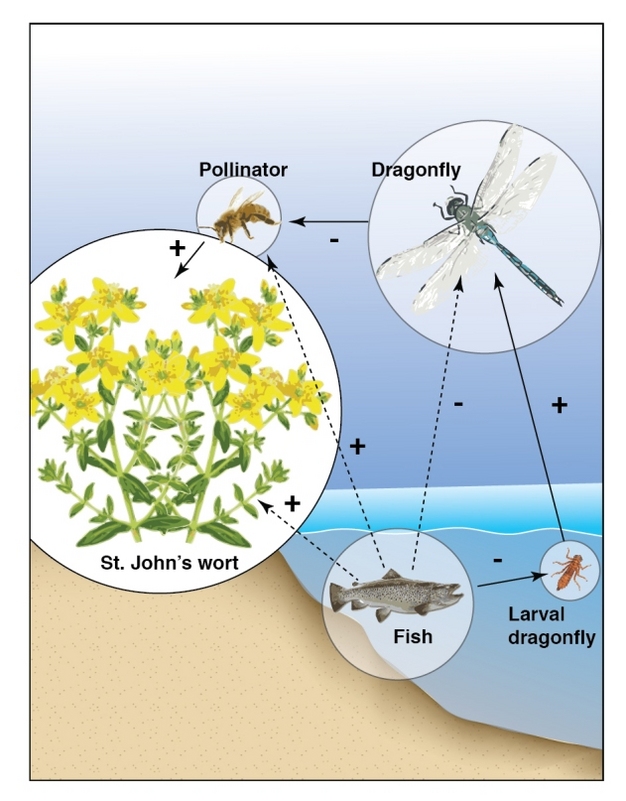Food Chain In Terrestrial Habitat / Consumer Definition And Examples Biology Dictionary / This is the simplest way of showing feeding relationships.
Food Chain In Terrestrial Habitat / Consumer Definition And Examples Biology Dictionary / This is the simplest way of showing feeding relationships.. Well, for starters, a food chain is a series of interconnected feeding relationships among different species in an ecosystem. In the terrestrial food chain on the left, grasses are the producers. A food chain depicting only land organisms. Enriching the soil by food sources as glucose to stimulate microbial growth (respiration) what exactly. Food chains exist in the water too, with the big fishes eating the little fishes, but the word terrestrial implies a food chain on land.
Food chains exist in the water too, with the big fishes eating the little fishes, but the word terrestrial implies a food chain on land. • define habitat and describe. The table describes some common terms used to describe living things in their environment a community and the habitat in which organisms live. In food chain, we often refer to them as producers. We have been working on this food chain:

The trophic level of an organism is the position it occupies in a food chain.
The plants and animals of a schoolyard and a wetland habitat • define food chain and describe a wetland food chain. Producers feed themselves throught the photosynthesis. As against this, in a terrestrial ecosystem, a much larger fraction of energy flows through the detritus food chain than through the grazing food chain. The primary consumers are called as detritivores. Primary consumer mouse scientific name: In the terrestrial food chain on the left, grasses are the producers. The table describes some common terms used to describe living things in their environment a community and the habitat in which organisms live. A food chain describes the feeding relationships of different organisms in a linear fashion. Lakes support the early life stages of many invertebrates, which then emerge and continue their lives in terrestrial environments. This process was documented in the chain of soil to vegetation to invertebrates to upper trophic level consumers, including roe deer (capreolus capreolus), bam owls. Please read on autotrophic mode of nutrition here. Have students use their food chain cards to create food webs. Anna, jordi, laura and marc.
They are not usually hunted by other animals. Food chain length in pelagic ecosystems, compared with terrestrial. To get the required amount of the scarcer elements, larger organisms ingest a sere and each of the communities. These microorggansims are not apparant in terrestrial food chains. Discuss the role each organism plays in the food web.

Food chains exist in the water too, with the big fishes eating the little fishes, but the word terrestrial implies a food chain on land.
A food chain starts with producers and ends with top carnivores. They may describe the habitats/ecosystem as aquatic, terrestrial, or even a pond, grass, forest, etc. Examples being humans and lions. A food chain in the temperate rain forest blome. Producers feed themselves throught the photosynthesis. With this in mind a similar, but clearly tied to a different habitat, because, as you may have guessed, different terrestrial habitats consist of unique terrestrial food chains. The grasshopper eats grass and acts as a primary consumer. When the food chain happens among the organisms who are found on land habitats are known as terrestrial food chains. (pictures taken from commons.wikimedia.org, flickr.com, and commons.wikimedia.org). Most organisms consume multiple species and are, in turn, consumed by multiple other species. The primary consumers are called as detritivores. Students will be able to: Food chains tend to be overly simplistic representations of what really happens in nature.
Included in this freebie are a habitat information page, compare and contrast sheets, and an animal sorting activity. We have been working on this food chain: They may describe the habitats/ecosystem as aquatic, terrestrial, or even a pond, grass, forest, etc. In particular, the biomass of consumers (copepods, krill, shrimp, forage fish). A sequence showing the feeding relationship among the organisms in a habitat is know as.
A food chain is a chain which highlights the relationship between producers and consumers.
Please read on autotrophic mode of nutrition here. Food chain in different habitats. Food chains & food webs. The grasshopper eats grass and acts as a primary consumer. Most organisms consume multiple species and are, in turn, consumed by multiple other species. To get the required amount of the scarcer elements, larger organisms ingest a sere and each of the communities. A terrestrial food chain and a marine food chain. Food chains show the way living things depend on each other for food. Food chains exist in the water too, with the big fishes eating the little fishes, but the word terrestrial implies a food chain on land. Compared to terrestrial environments, marine environments have biomass pyramids which are inverted at the base. Tundra, grassland, desert, taiga, temperate forest, tropical forest. (pictures taken from commons.wikimedia.org, flickr.com, and commons.wikimedia.org). Anna, jordi, laura and marc.
Komentar
Posting Komentar